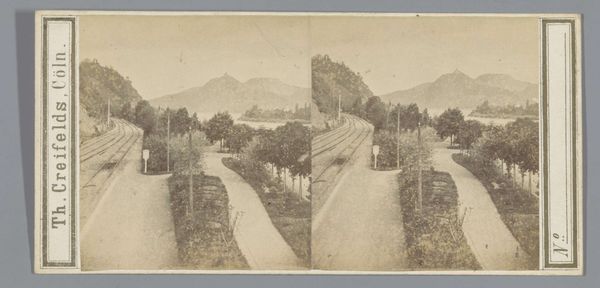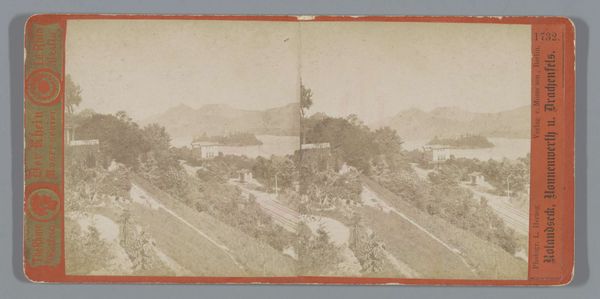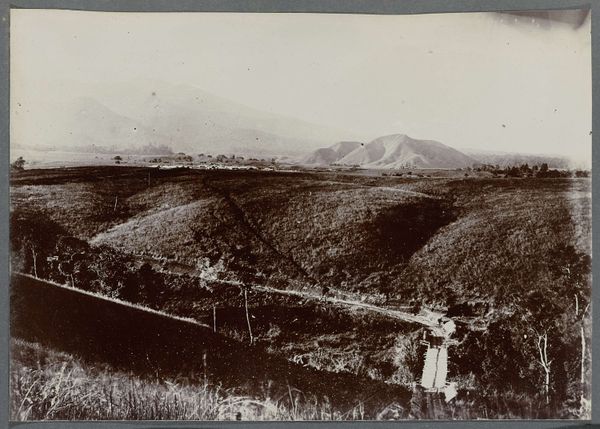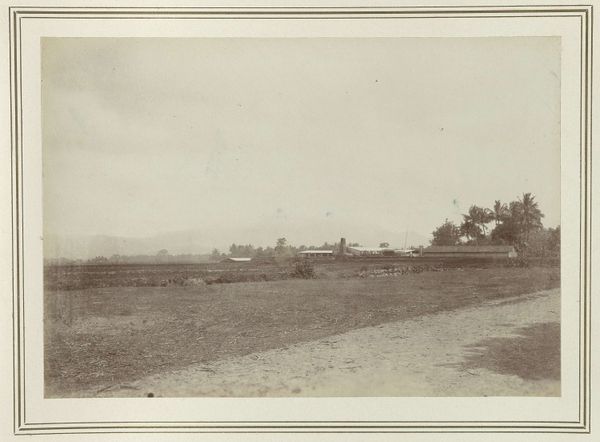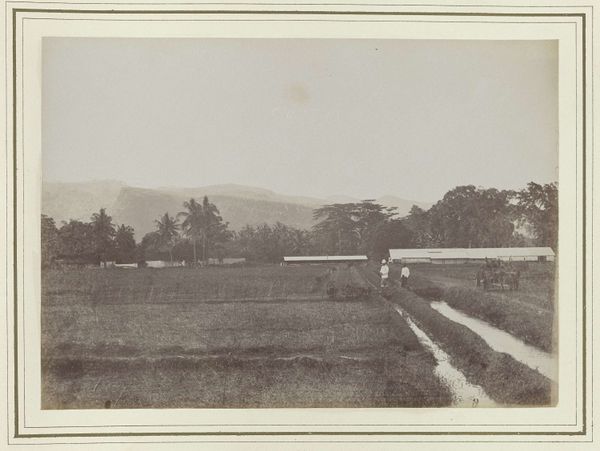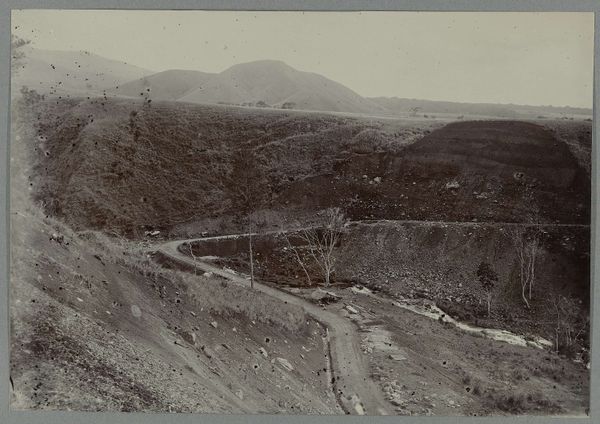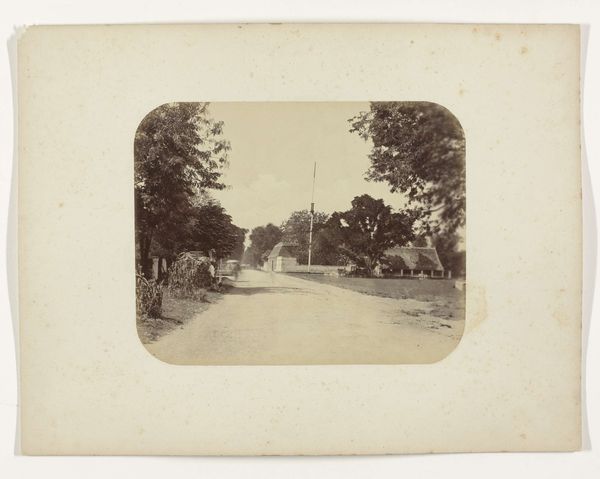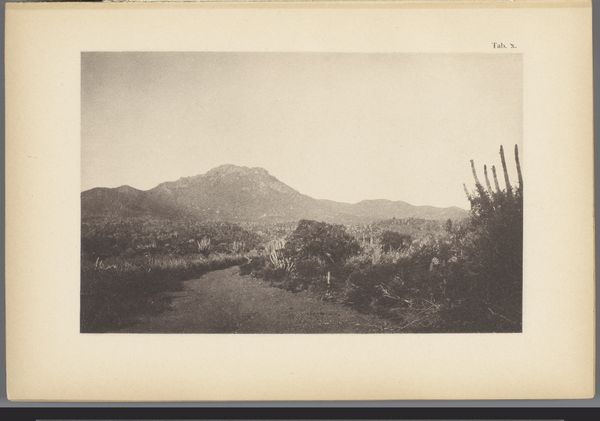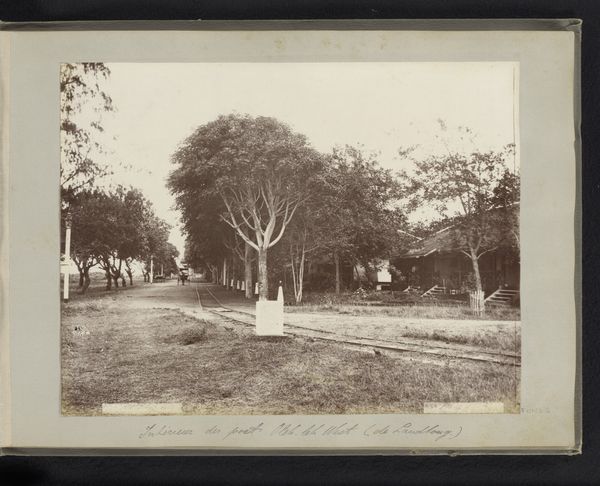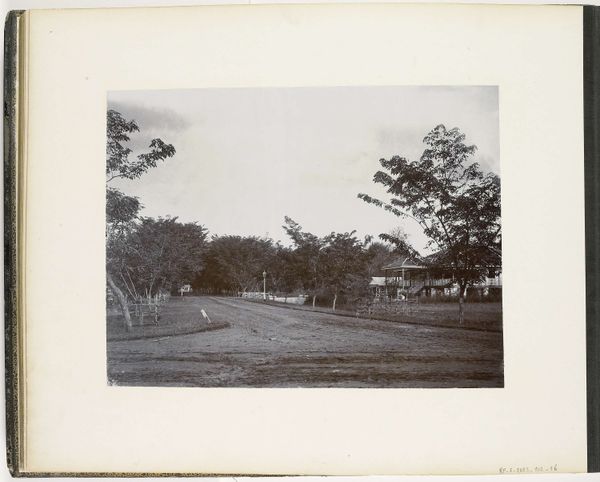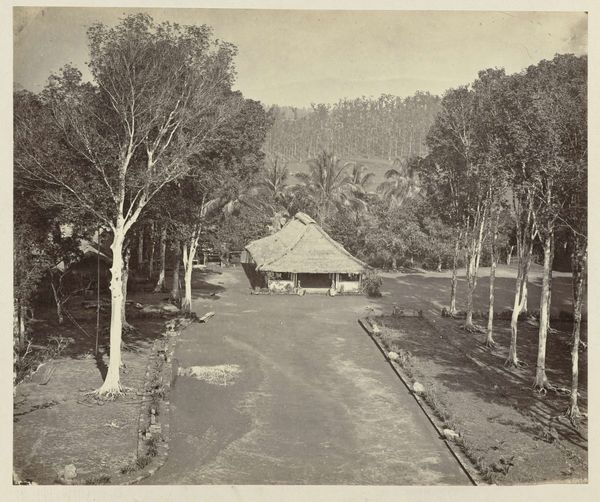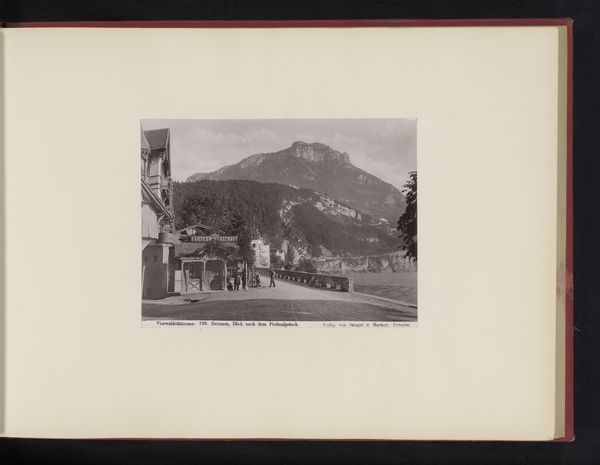
Monument op een plein in Nederlands-Indië met daarvoor een rijtuig en een vélocipède c. 1895 - 1905
0:00
0:00
photography, gelatin-silver-print
#
statue
#
landscape
#
photography
#
gelatin-silver-print
#
cityscape
Dimensions: height 200 mm, width 253 mm
Copyright: Rijks Museum: Open Domain
Editor: Here we have Christiaan Benjamin Nieuwenhuis' gelatin-silver print, "Monument op een plein in Nederlands-Indië met daarvoor een rijtuig en een vélipède," dating from around 1895 to 1905. The sepia tone lends the scene a kind of antique formality, but the monument feels... out of place somehow. What story does this image tell, and what makes it stand out to you? Curator: The monument's European architectural style situated within this colonial Indonesian cityscape speaks volumes. It's not simply a record of a place; it's a document reflecting the power dynamics of Dutch colonialism. Consider who funded and commissioned the monument, and for what purpose. This monument would be viewed through differing ideological perspectives depending on the cultural origin and background of the observer. What purpose does public art like this serve within a colonial context? Editor: I suppose it would have reinforced a sense of European dominance, a visual statement of power to both the colonizers and the colonized. So the monument is less about artistry and more about the political message it sends? Curator: Art and politics are always intertwined, particularly public art. Visual rhetoric such as the imposing architecture or its physical position creates a sense of hierarchy and order imposed by the colonizers. It prompts us to consider who is represented, who is celebrated, and whose stories are being told – or erased – through the construction of such spaces. Editor: It’s strange to think about how something like a statue can have such a powerful social effect. Thank you. I will consider all those ideas in my notes about it! Curator: A single photograph encapsulates complex histories and ideological claims of the subjects it frames. The medium gives the subjects new life, prompting constant interrogation through different theoretical frameworks of thinking. It has certainly provided me with a deeper understanding of art's role in societal expression.
Comments
No comments
Be the first to comment and join the conversation on the ultimate creative platform.
